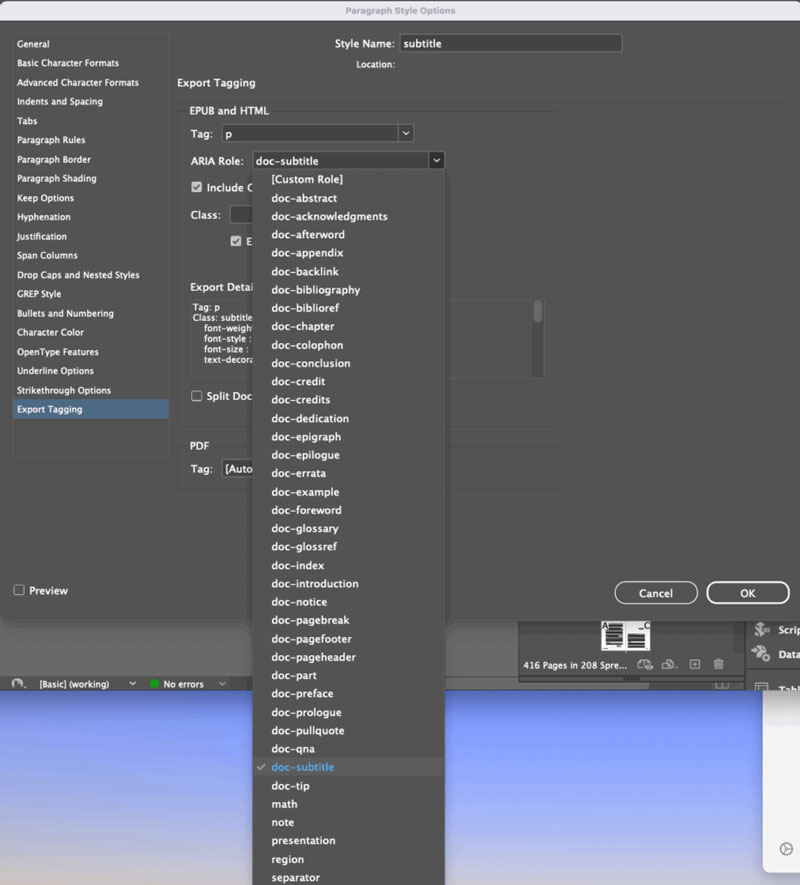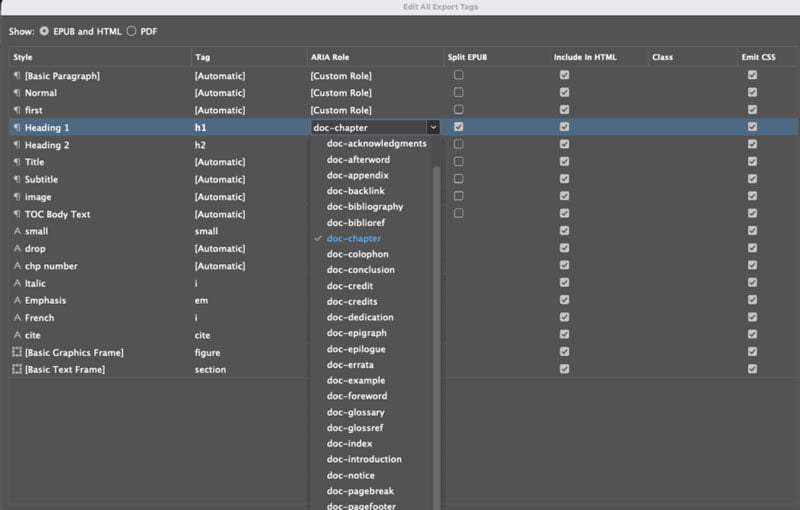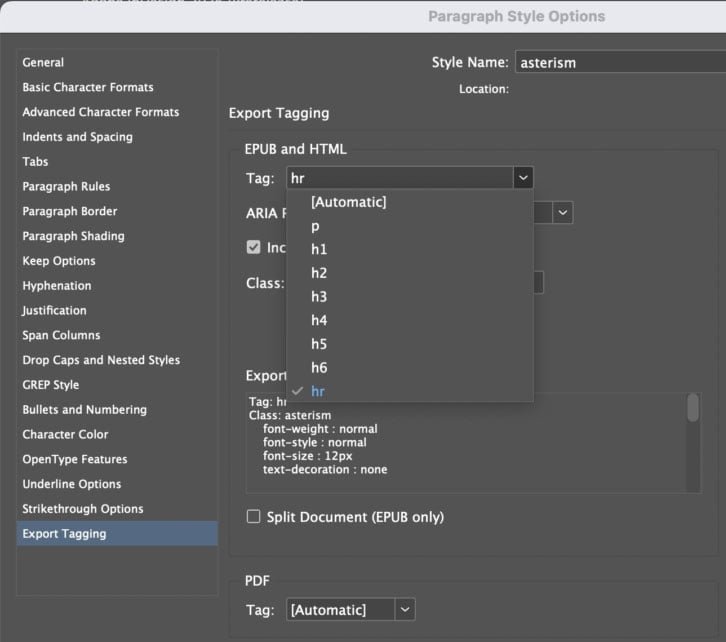EPUB Accessibility Updates in InDesign 2026
InDesign 2026 (version 21.0) offers significant upgrades for accessible EPUB production

InDesign 2026 (version 21.0) includes a few significant upgrades to assist with the production of accessible EPUB ebooks. Here’s a look at what’s new.
ARIA Roles
Ebook creators can now apply ARIA roles, including the full list of DPUB-ARIA roles, to structures in a book. InDesign has long been capable of creating epub:type semantics, the older form of semantics. While these are useful for things like pop-up footnotes, they will not improve the accessibility of an ebook. According to the DAISY Knowledge Base:
It was hoped it would bridge the need for publisher workflow semantics with accessibility, but did not succeed. It does not improve the accessibility of publications on its own.
ARIA roles are where the real accessibility heavy lifting happens. Many structures cannot be directly identified with native HTML tags, so DPUB ARIA roles have been implemented to convey this information, which is normally graphical, to assistive technologies: for example, footnotes, colophons, dedications, parts, chapters, pull quotes, etc. These digital publishing roles are applied to various elements, thus providing additional information for assistive technologies. Distinguishing the purposes of common elements like <section> and <aside> is a little easier when a role is applied: <section role="doc-chapter"> or <aside role="doc-tip"> for example.
A full set of ARIA roles is now built into InDesign and can be applied at the object (frame), paragraph or character style level. The field is editable, so that any string can be entered as a role: so be careful not to enter invalid strings!

These options are also available from the Edit all Export Tags window.

As with epub:type semantics, which have been available from InDesign for some time, applying semantics at the object level will only work on the first frame in a text thread. That issue has not gone away, yet. Also, developers should be mindful of which ARIA roles are applied at the object and which at the paragraph or character level. InDesign will allow users to apply roles at the paragraph level which should be applied to the <section> or <div> tag, and which might throw validation errors.
Context Breaks
It is now possible to export context breaks, sometimes known as editorial spaces, more semantically. A context break represents a shift in thought, time, location, or similar in a work. These changes are typically represented by a noticeable blank space between paragraphs. A context break sometimes includes asterisms or other decorations. The correct way to markup the break is with an <hr /> with or without a class from which some styling comes.

As with ARIA roles, users can now map a paragraph style to an <hr /> tag, either in the style’s export settings or via the Edit all Export Tags menu.
There are three types of content breaks, and InDesign handles each in a different way:
- Blank context breaks – an empty paragraph.
- Text-based context breaks – a paragraph containing one or more characters.
- Image context breaks – a paragraph containing an inline image.
For blank breaks, the CSS hides the default horizontal line and applies vertical spacing to maintain the visual separation (border: none). For text-based breaks (like asterisks or decorative symbols), InDesign uses CSS to hide the line and display the ornamental characters (e.g.: after { content: "???"; display: block;}). For image breaks, InDesign uses the CSS background-image property to display the graphics.
MathML
MathML was introduced in the October 2024 release. InDesign’s MathML export capability, introduced in the October 2024 release, has been further refined with important accessibility improvements in this latest version. Mathematical expressions now export to EPUB as clean MathML, which is widely supported by EPUB reading apps and assistive technologies including screen readers and read-aloud tools. Crucially, when math expressions use only default properties, InDesign now avoids explicitly setting color and size attributes in the exported code. This ensures that users who need to customize colors and text size for readability are not blocked by hardcoded formatting.
With these improvements, InDesign inches closer and closer to a polished and accessible EPUB export.
Republished with permission from Inclusivepublishing.org
This article was last modified on October 30, 2025
This article was first published on October 30, 2025




